Bangkok, the vibrant capital of Thailand, is a city of contrasts where modern skyscrapers stand alongside ancient temples and bustling markets. The whole city has transformed to welcome international tourists and is today the most visited city by tourists worldwide, offering vibrant street food, cultural experiences and a lively nightlife. This offers a network of transport options, including convenient Grab cars, and a range of accommodations adapted to all budgets. For the birdwatcher, this allows to connect with a number of goodies in different spots without leaving the metropolitan area.
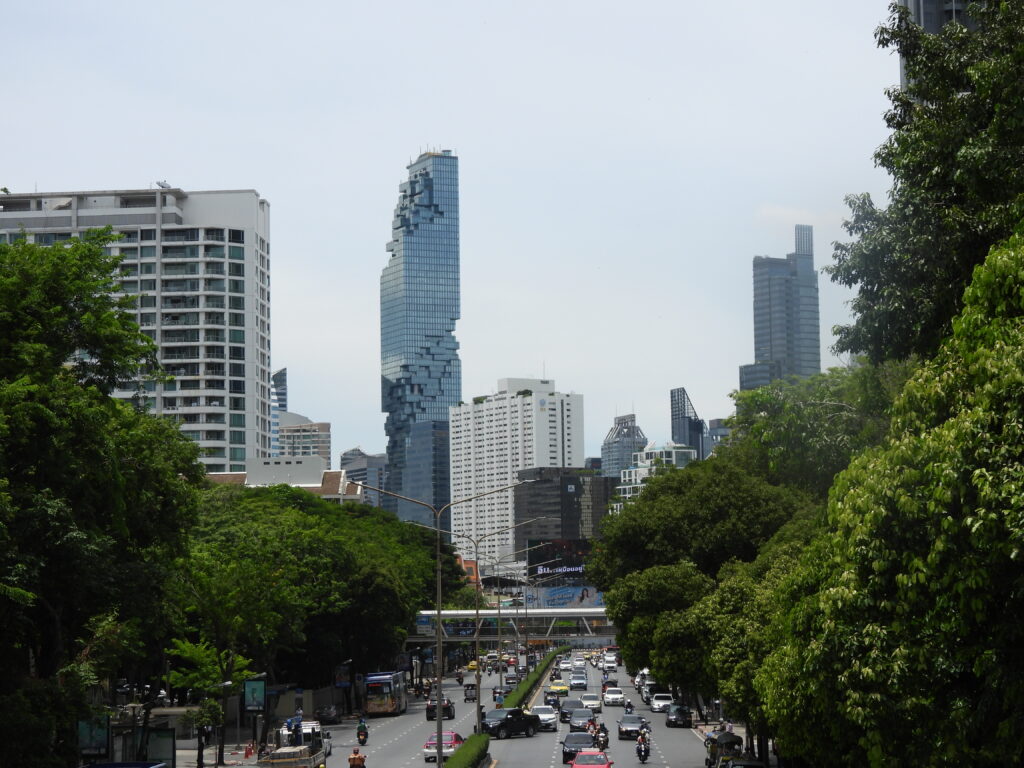
Temple gardens featured numerous urban species. A visit to the Grand Palace or the Reclining Buddha comes with granted sights of black-collared starlings (Gracupica nigricollis) and Siamese pied starlings (Gracupica floweri), great myna (Acridotheres grandis) and common myna (Acridotheres tristis), large-billed crows (Corvus macrorhynchos), house sparrows (Passer domesticus) and Eurasian tree sparrows (Passer montanus), spotted doves (Spilopelia chinensis), red collared-doves (Streptopelia tranquebarica) and introduced zebra doves (Geopelia striata) and feral pigeons (Columba livia domestica).
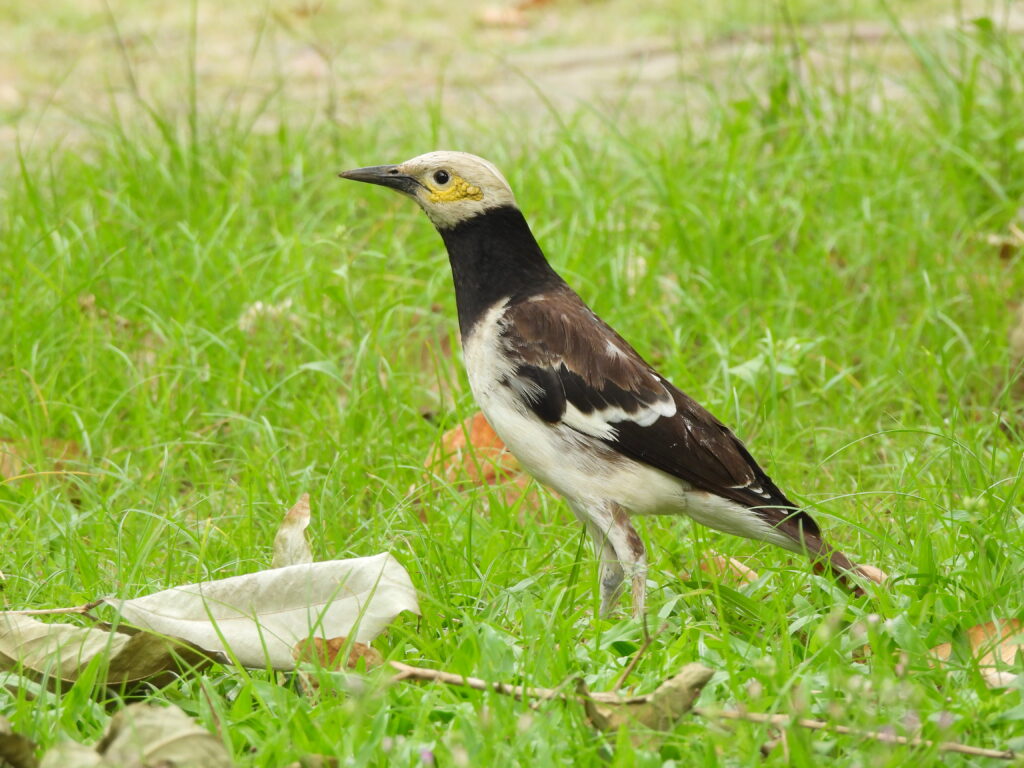
We visited Lumphini Park, a large green area in downtown Bangkok. The park lake offered close-up looks of water monitors (Varanus salvator) and Asian openbills (Anastomus oscitans), as well as little egrets (Egretta garzetta) and little herons (Butorides atricapilla).
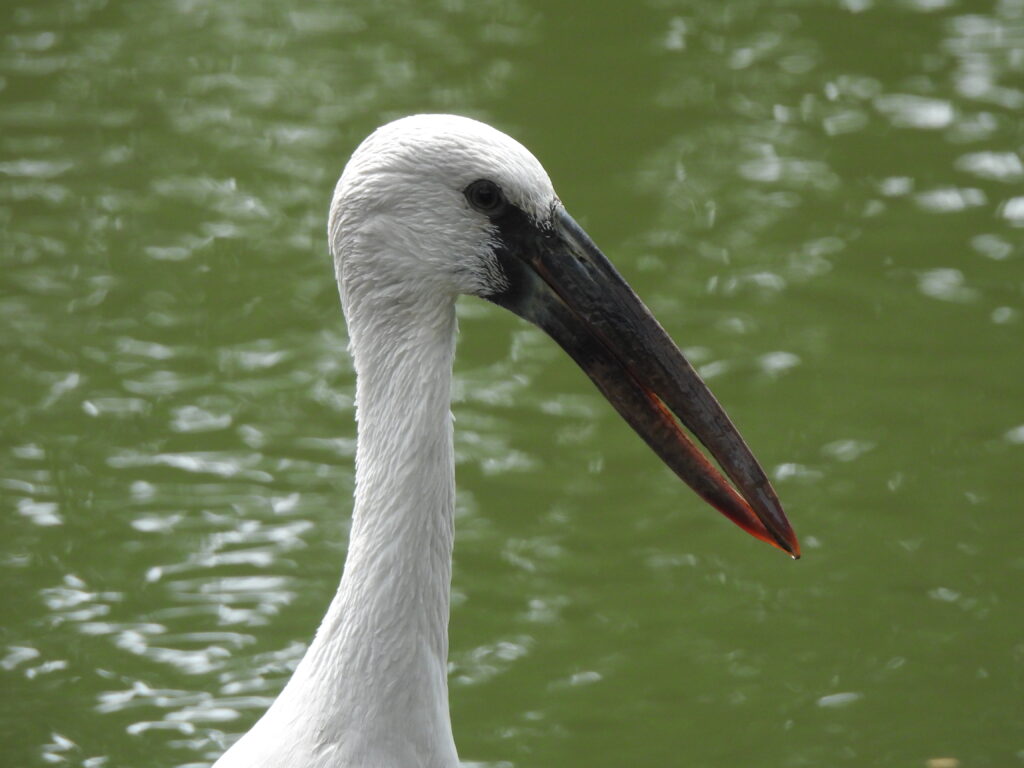
Rot Fai Park was another highlight of the city. The vegetation featured scarlet-backed flowerpeckers (Dicaeum cruentatum), common tailorbirds (Orthotomus sutorius), ornate sunbirds (Cinnyris ornatus), oriental magpie-robins (Copsychus saularis) and streak-eared bulbuls (Pycnonotus conradi). At least four Asian barred owlets (Glaucidium cuculoides) tried to conceal in large forests.

We managed to get close looks of Indochinese rollers (Coracias affinis) in Rot Fai after distant looks in Lumphini. This bright-colored species seems to favor urban green areas along its range. We saw some birds catching preys in the canopies and looking for preys in a grassy area.
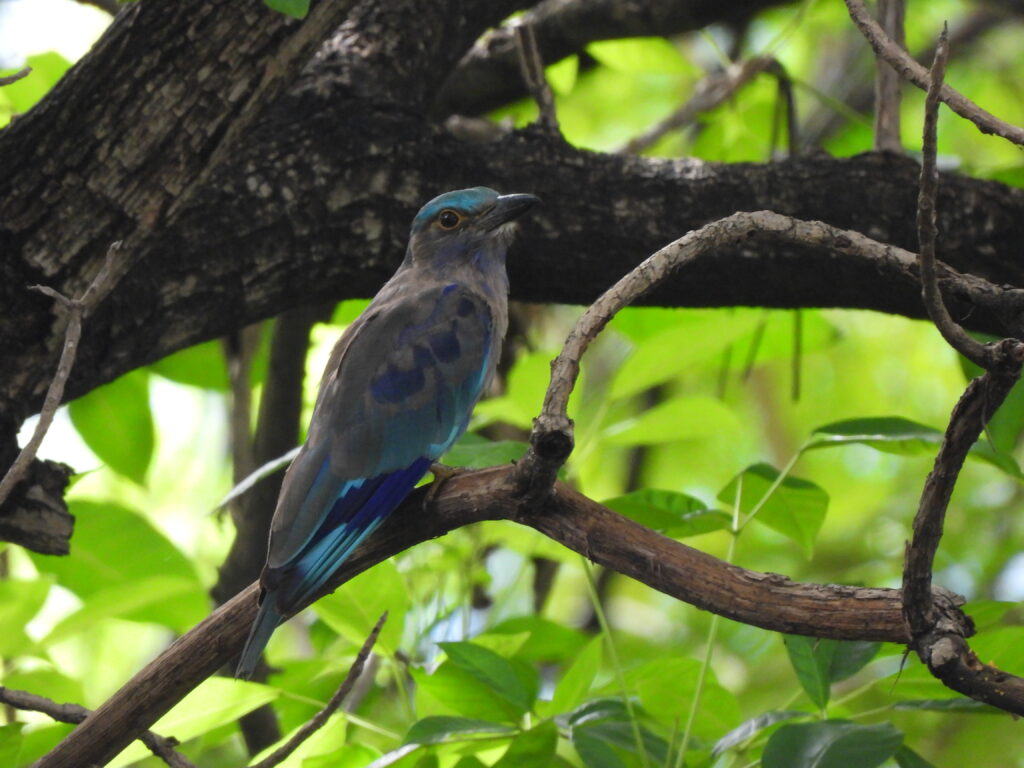
The grassland featured several eastern cattle egrets (Ardea coromanda) and Javan pond herons (Ardeola speciosa). However, we got the best looks of this last species in some lily ponds, where birds in breeding plumage posed beautifully among the water lily flowers while hunting for frogs and fish.
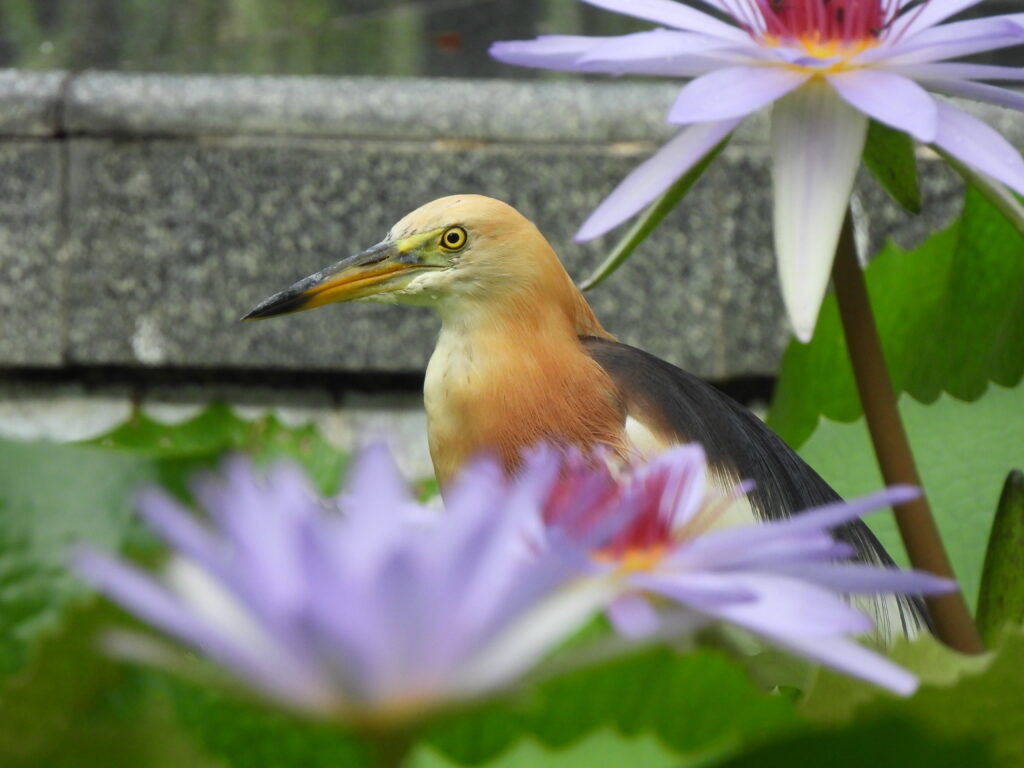
Next to Rot Fai Park, a whole wildlife market is set on Saturdays. A coincidental visit to Chatuchak Weekend Market gave us an even closer experience to the threatening wildlife trade in Southeast Asia after weeks of encountering hundreds of caged birds all over the place. Here, things got to a different level. Hornbills, birds-of-paradise, toucans, all sorts of cockatoos and parrots, thousand-dollar arowanas, giant tortoises and many other animals were for sale, gathered in small cages and sighted by potential sellers and tourists. This is a reality that was worth facing during our visit and is worth writing about today.
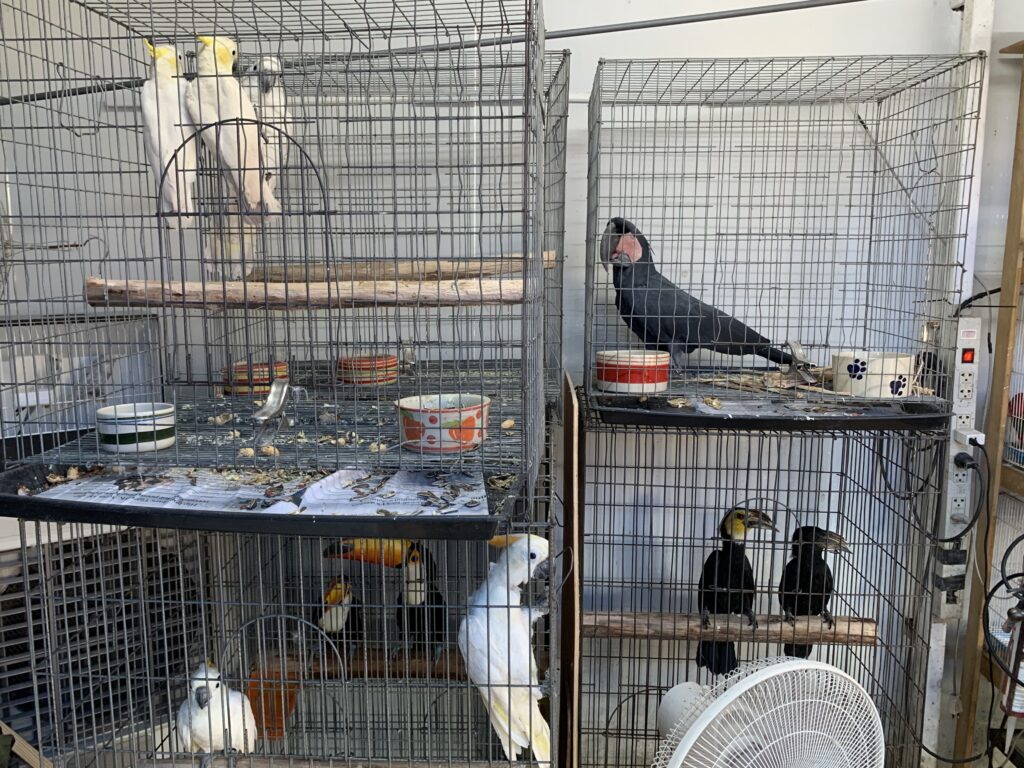
The whole experience was striking, and not in a positive way. Extremely rare birds and other animals that we will likely never see in the wild — some at the verge of extinction — were for sale and available to anyone willing to pay. At a certain point we could not expect what extremely rare, endangered animal we would find around the next corner.
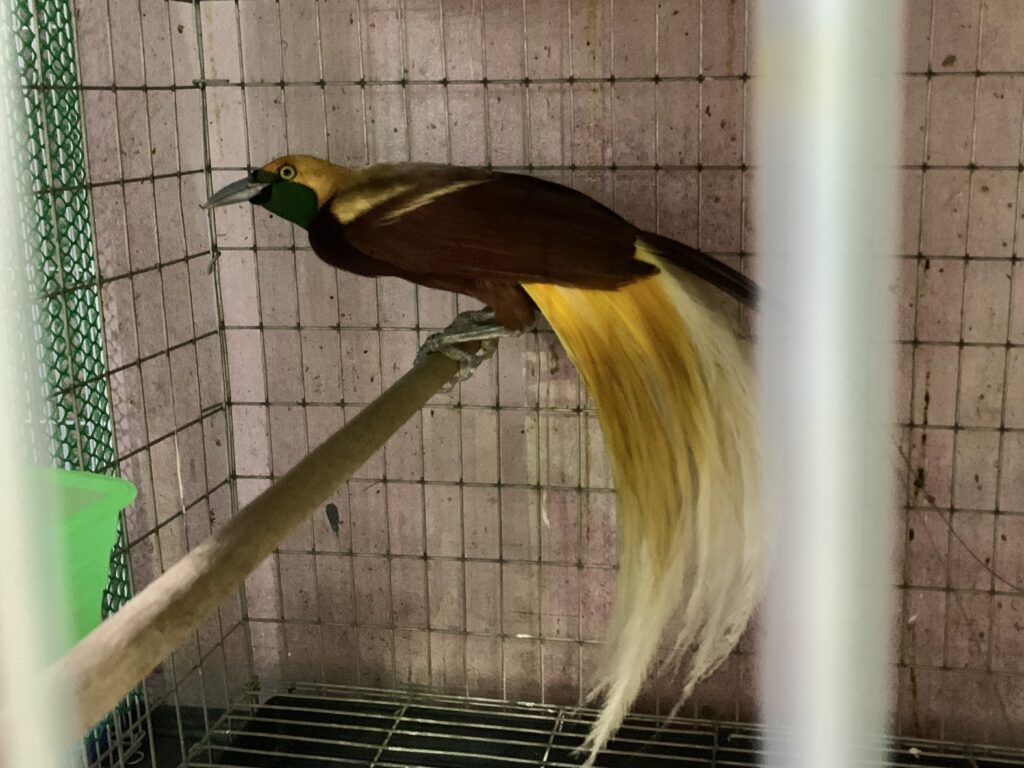
Interestingly, and despite what our sensitivity of principles would made us feel, one could not say trade is uncontrolled. We encountered several officers visiting every single store and taking notes on any animal being offered and sold. This scenario is simply beyond our understanding as our generation in Spain barely lived the old days in which wildlife trade, including that of rare, valuable and exotic species, was so explicit and present in daily life. Food for thought.
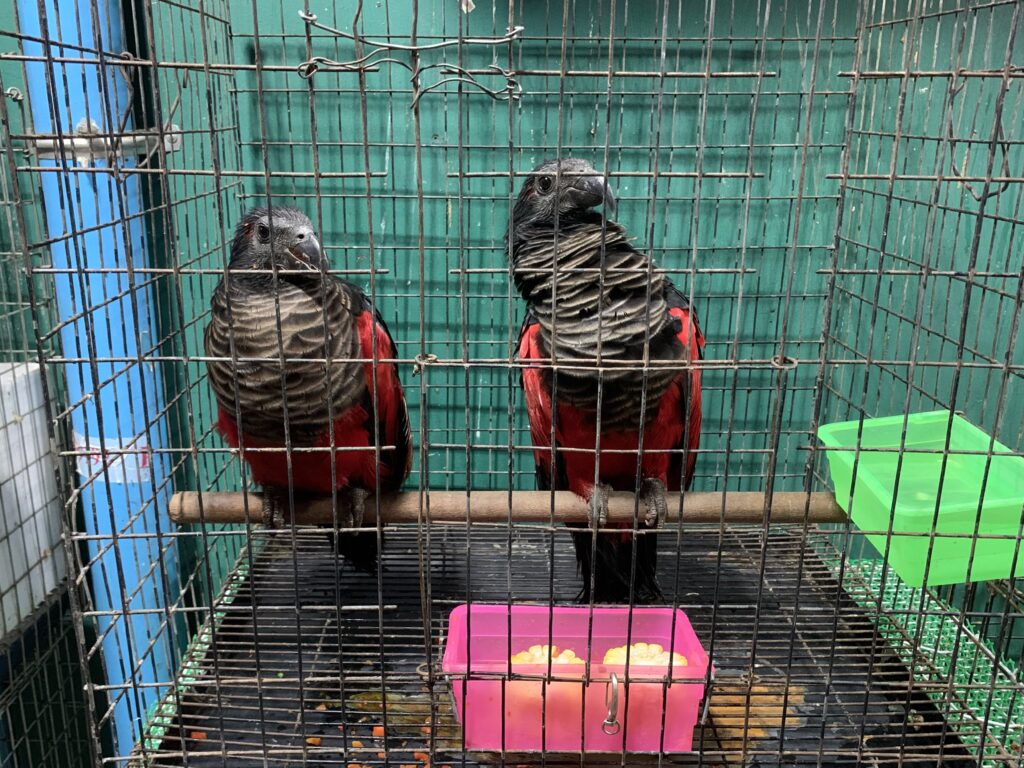
Another rather negative but more fulfilling experience was visiting the Museum of Natural History at Chulalongkorn University. A large collection on taxidermized species included two white-eyed river-martins (Pseudochelidon sirintarae), a lost species that was only described to Western science in 1968 in Thailand and has not been seen since 1980, possibly affected by the construction of a dam.
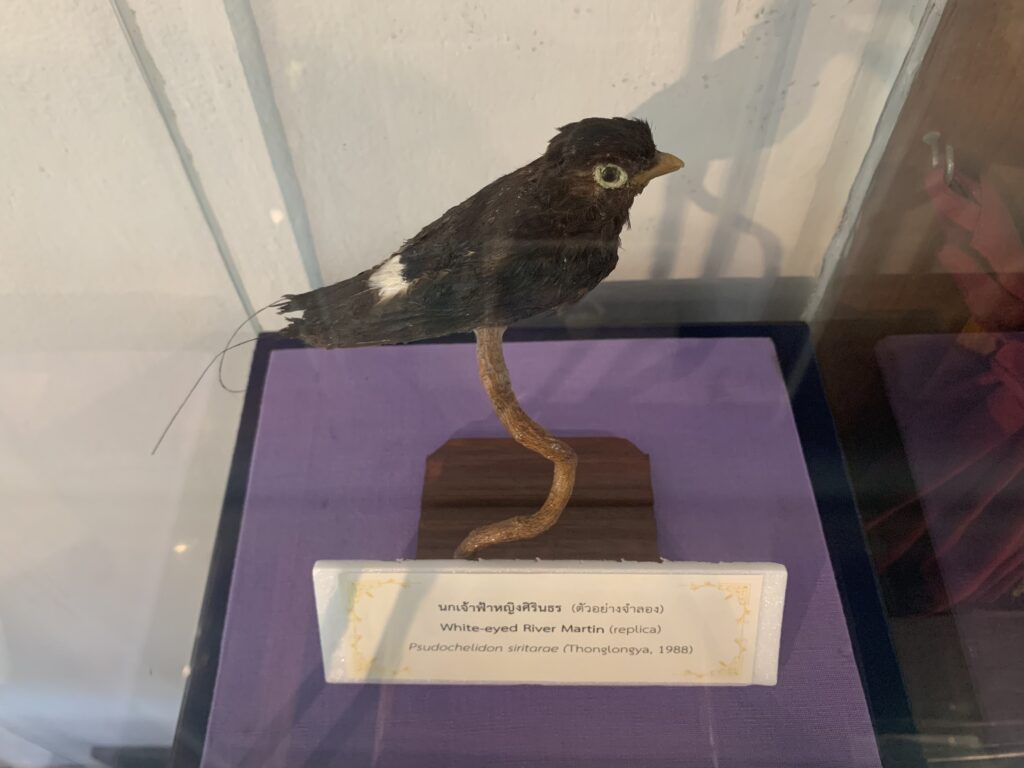
Back to actual birdwatching, we took a train to Samut Prakan on the following day and then took a Grab car to Bang Pu Recreational Center. This coastal wetland in metropolitan Bangkok serves as a nice place to connect with waders and other migrants at close distance from the city center.
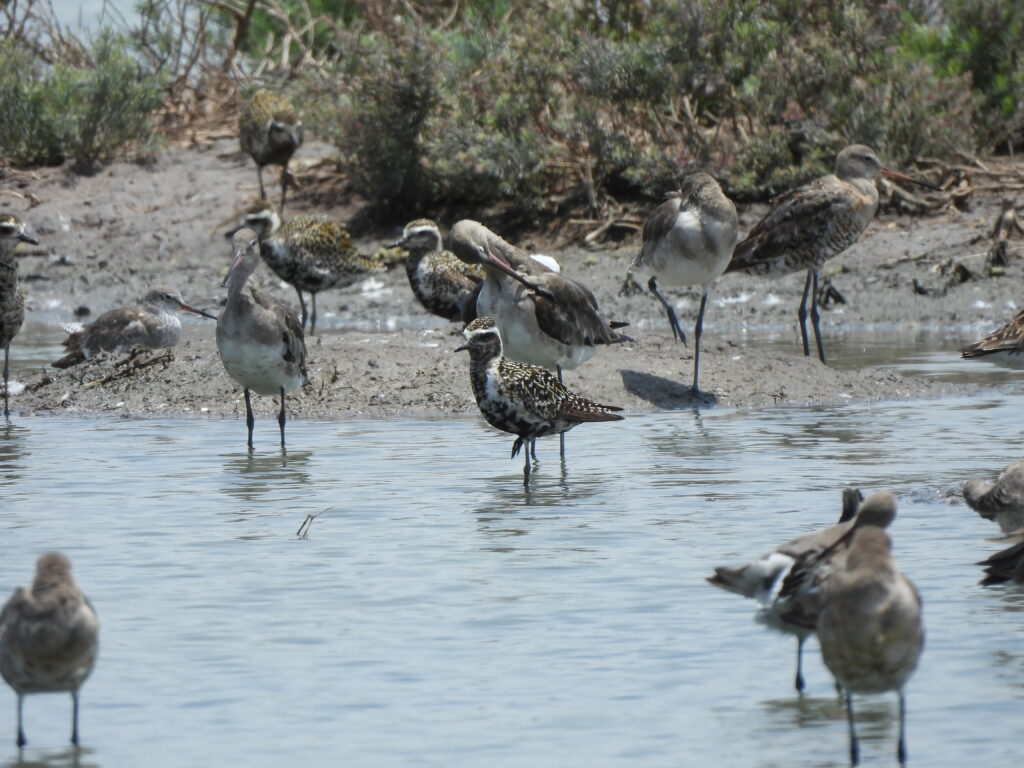
Already on arrival, good numbers of painted storks (Mycteria leucocephala) and Asian openbills (Anastomus oscitans) flew over. Plaintive cuckoos (Cacomantis merulinus), greater coucals (Centropus sinensis) and coppersmith barbets (Psilopogon haemacephalus) sang from the vegetation and small flocks of baya weavers (Ploceus philippinus), Eurasian tree sparrows and scaly-breasted munias (Lonchura punctulata) flew by. A common sandpiper (Actitis hypoleucos) foraged on a shallow puddle on the parking lot.
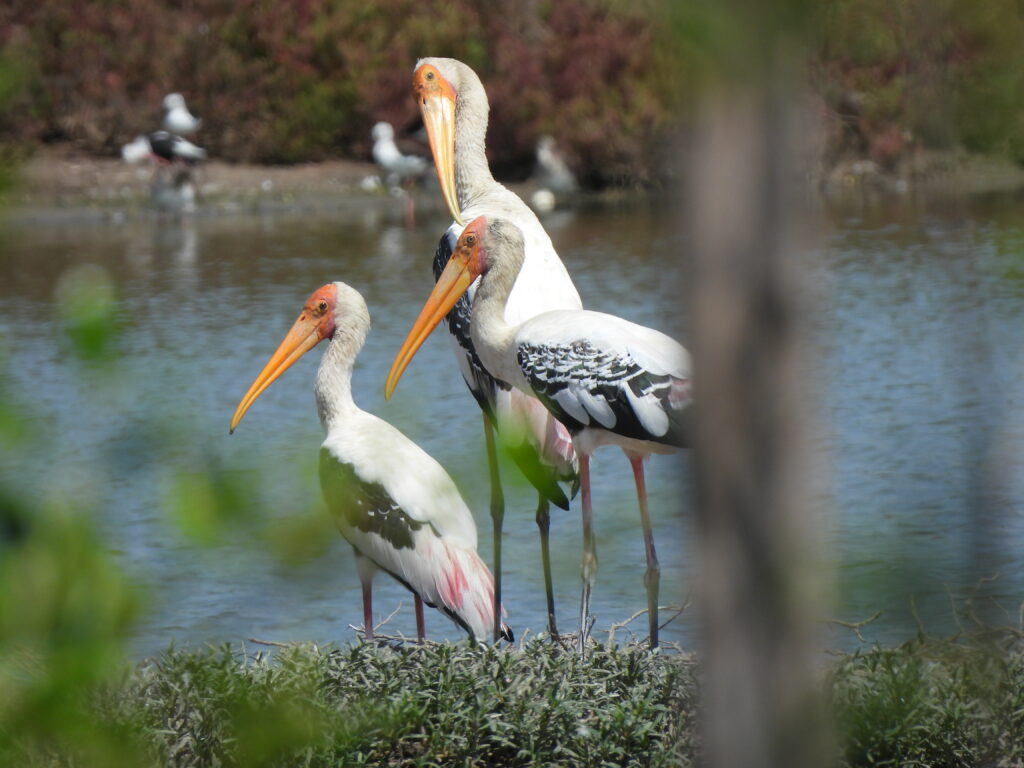
Mangroves on the coastal area of Bang Pu featured numbers of collared kingfishers (Todiramphus chloris) and common kingfishers (Alcedo atthis) stalking crabs and mudskippers on the water. Mixed-species foraging flocks included common ioras (Aegithina tiphia) and Swinhoe’s white-eyes (Zosterops simplex). We also glimpsed Malaysian pied-fantails (Rhipidura javanica) and golden-bellied gerygones (Gerygone sulphurea) — the latest being the only member of its Australasian family to be found in the region.
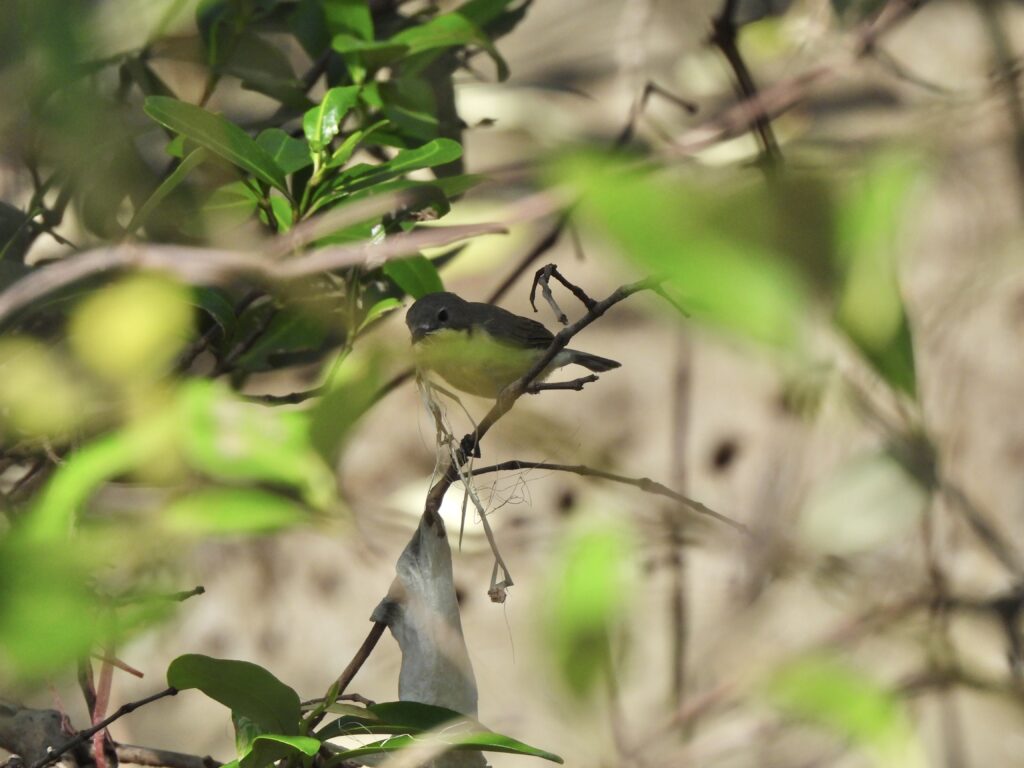
We did also find some stunning male yellow-rumped flycatchers (Ficedula zanthopygia). These long-distance migrants had likely just arrived as it was early in the season, and would be seen in the region only for few weeks on their way between their breeding grounds in eastern Asia and their wintering range in Southeast Asia and the Indian Subcontinent.
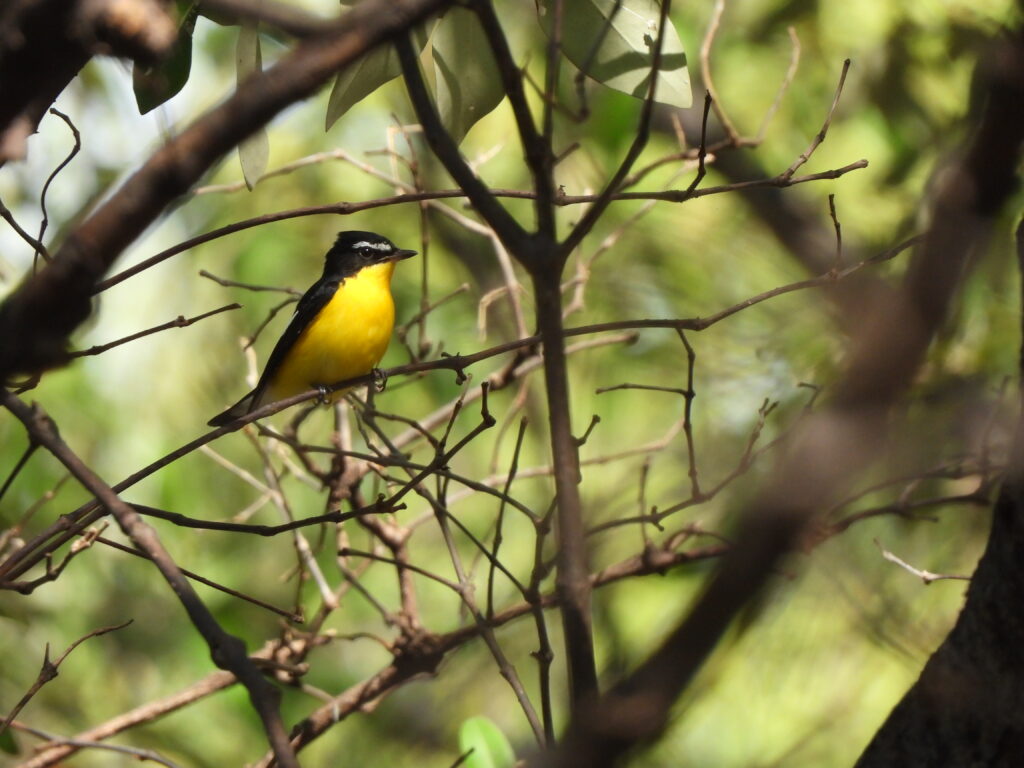
The wetland itself was extremely birdy. Shallow lagoons had flocks of little cormorants (Microcarbo niger) and Indian cormorants (Phalacrocorax fuscicollis) plus numerous great egrets (Ardea alba) and purple herons (Ardea purpurea) foraging.
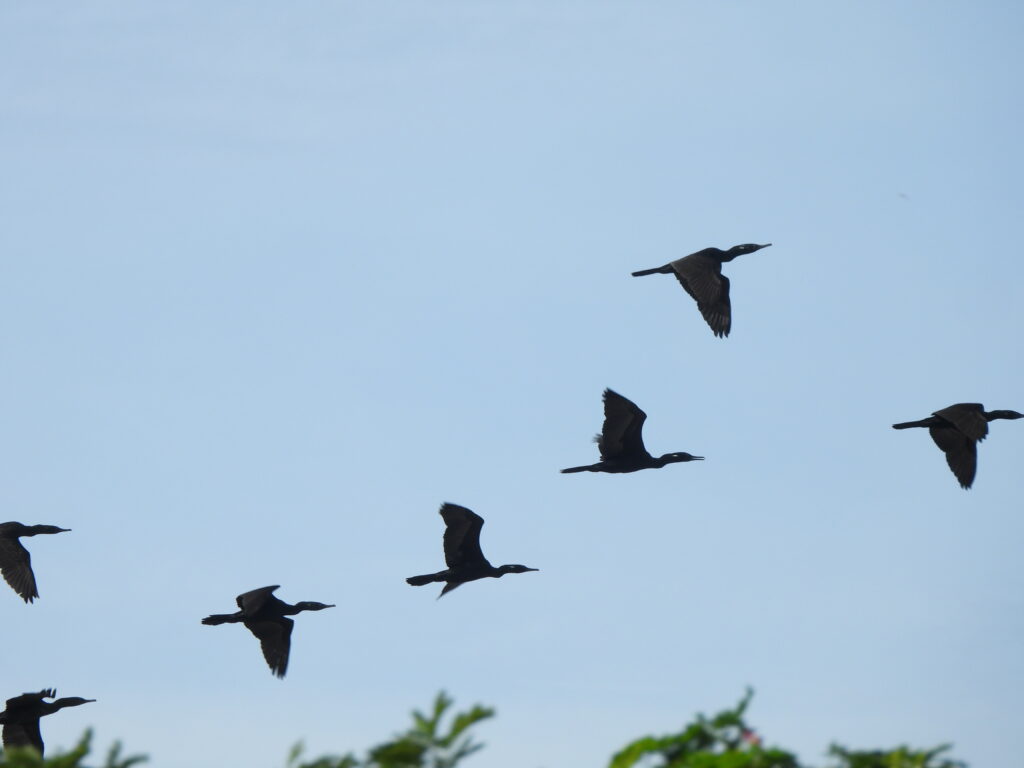
We reached a birdwatching tower on one of the largest lagoons. As we approached the spot, different vegetation clearings allowed us to glimpse hundreds of waders roosting: dozens of marsh sandpipers (Tringa stagnatilis), greenshanks (Tringa nebularia), black-tailed godwits (Limosa limosa) and Pacific golden plovers (Pluvialis fulva).
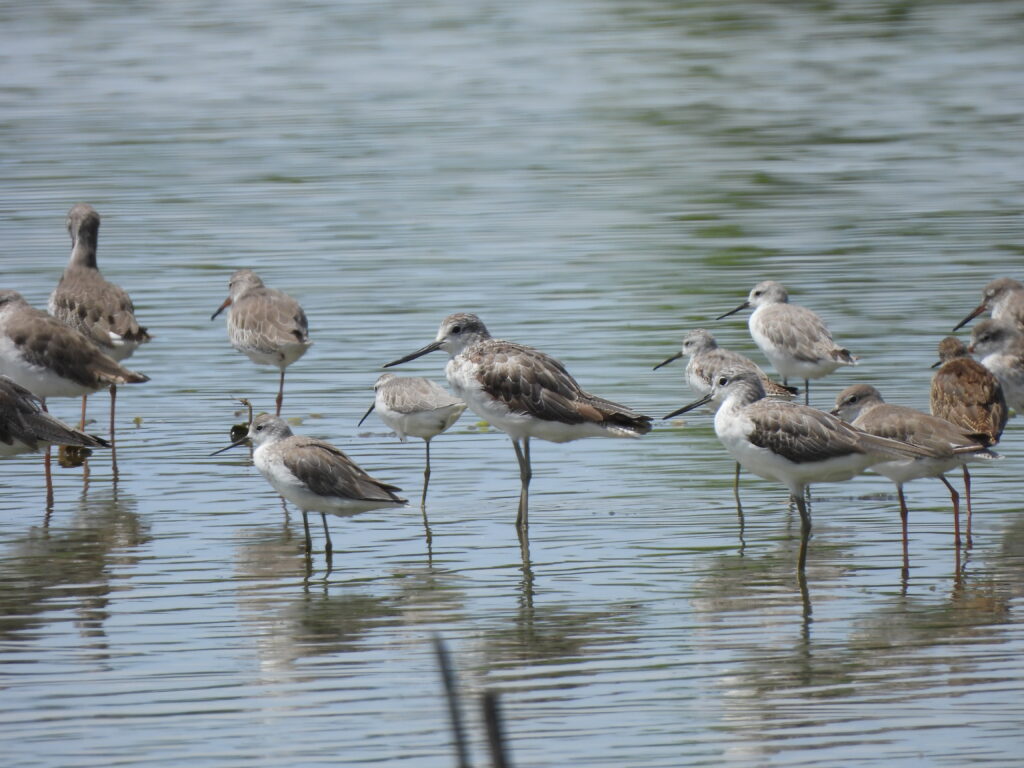
From the observation tower, we could see small flocks of black-winged stilts (Himantopus himantopus), whimbrels (Numenius arquata) and redshanks (Tringa totanus). Whiskered terns (Chlidonias hybrida) flew over. Some red-wattled lapwings (Vanellus indicus) and a Tibetan sand-plover (Anarhynchus atrifrons) showed up too.
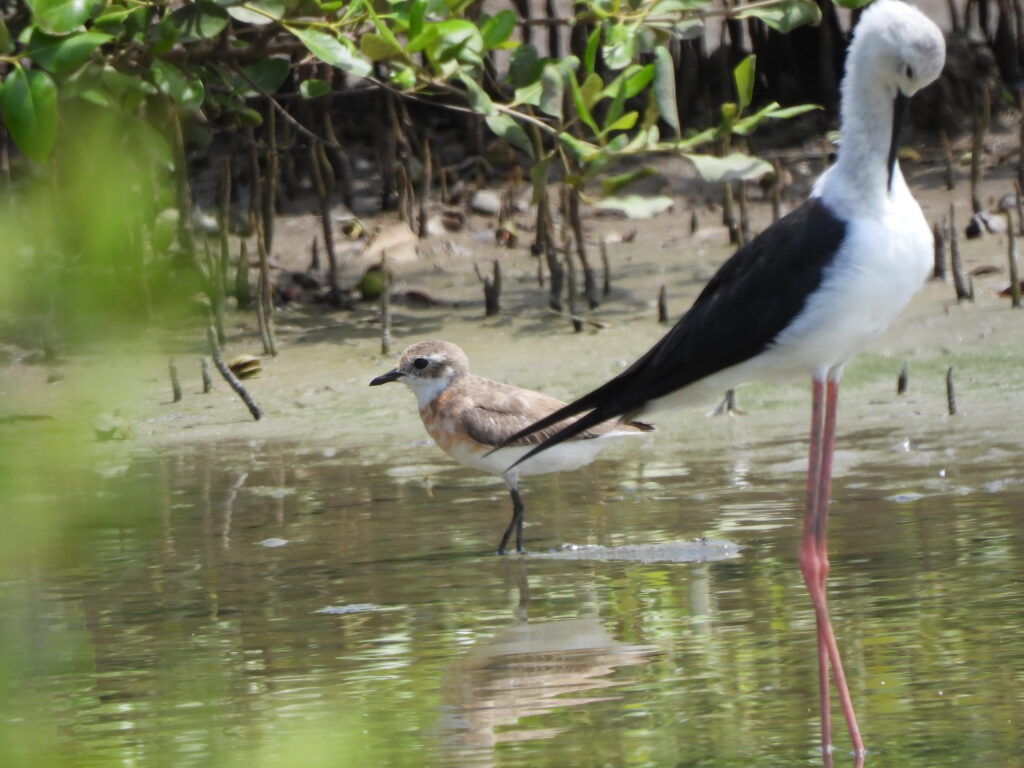
Despite our stay in Thailand took place during the hot and rainy lowest season for wildlife watching and it prevented us from visiting top birdwatching locations in the country, short visits within the city allowed us to connect with local specialties while exploring the rich cultural sites and attracting gastronomy Bangkok has to offer, all while traveling on a budget.




